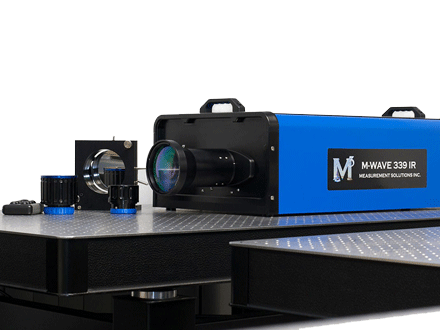|
Thursday, November 10, 2016 |
|

|
|
|

|
| sponsor |
 |
|
Is There Life on Mars? Lidar Device May Be Able to Tell Us.
A biosensor currently used by the U.S. military to remotely monitor the atmosphere for potential toxins has inspired a novel device that could be used for detecting biosignatures in space. The Bio-Indicator Lidar Instrument, or BILI, is a prototype of a fluorescence-based lidar that may ultimately be used in space exploration to analyze particles for organic material.
|
|
|
|
|
|
Industry and Academe Partner to Advance Thin Film Coating Technology
The University of Southampton and Plasma App Ltd. are collaborating on a one-year, £150k feasibility study to explore novel thin film coating technology and applications. The project collaborators intend to produce well-characterized samples of a range of novel Gallium, Lanthanum and Sulphur (GLS)-based optics for dissemination to members of the Chalcogenide Advanced Manufacturing Partnership. The wider community of chalcogenide glass users, especially those pursuing optical applications for aerospace, defense and IR imaging, will also use them.
|
|
|
|
|
|
Light-Sheet Microscope Automatically Adjusts to Optimize Image Quality
A light-sheet microscope has been developed that can automatically adapt to the dynamic optical conditions of large living specimens. The smart microscope combines a novel hardware design with a software system that can analyze a specimen continuously and automatically adjust the settings to maximize image quality. Called the AutoPilot framework, this development could enable long-term adaptive imaging of entire developing embryos and improve the resolution of light-sheet microscopes up to five-fold.
|
|
|
|
|
|
Light-Initiated Hydrogenation of Graphene is Low Cost, Efficient
A study has demonstrated that graphene reacts with formic acid in a water solution upon irradiation of visible light. During the reaction, formic acid acts as masked hydrogen and a material is produced, adding extensive amounts of hydrogen to the graphene. Additionally, it was found that the irradiation of aromatic compounds such as formic acid and benzene caused the compounds to reach electronically excited states.
|
|
|
|
|
|
Technicolor Galaxies
Imagine being able to “see” radio waves. The Murchison Widefield Array (MWA) telescope can do just that by showing the viewer what the Universe would look like if human eyes could in fact see radio waves. The GaLactic and Extragalactic All-sky MWA, or GLEAM survey has produced a catalogue of 300,000 galaxies in what researchers are describing as “technicolor” in nature.
|
|
|
|
|
|
GE Acquires Majority Stake in Concept Laser Read Article
St. Jude Medical Reaches Primary Endpoint for OCT Trial Read Article
Specialised Imaging Forms Wegapixel Read Article
Han’s Laser expands with CorActive partnership Read Article
Quorum Coating System Installed at Univ. of Southampton Read Article
|
|
|
|
 Polarizing Beam Splitter Cubes
Polarizing Beam Splitter Cubes
Perkins Precision Developments LLC
Adhesive-free, precision beam splitter cubes from Perkins Precision Developments are available for high-power laser applications from 355 to 2000 nm in sizes from 3 × 3 mm to 15 × 15 mm. Our epoxy-free optical assembly process is an alternative to existing epoxy-based techniques for photonics applications.
Visit Website
Request Info
|
|
|
 M-Wave 339 IR Interferometer
M-Wave 339 IR Interferometer
M3 Measurement Solutions Inc.
The M-Wave 339 is a state-of-the-art Infrared Interferometer operating at 3.39 micrometers. It is the ideal instrument for testing mid-wave infrared imaging components/systems and optical material homogeneity.
Visit Website
Request Info
|
|
|
|
|
|
ICBPBO 2016 - 18th International Conference on BioPhotonics and Biomedical Optics
November 16-17, 2016 - Crowne Plaza Dubai - Dubai United Arab Emirates
The ICBPBO 2016: 18th International Conference on BioPhotonics and Biomedical Optics aims to bring together leading academic scientists, researchers and research scholars to exchange and share their experiences and research results on all aspects of BioPhotonics and Biomedical Optics. It also provides a premier interdisciplinary platform for researchers, practitioners and educators to present and discuss the most recent innovations, trends, and concerns as well as practical challenges encountered and solutions adopted in the fields of BioPhotonics and Biomedical Optics.
|
|
|
|
 |
|
|
|

CALL FOR ARTICLES!
Photonics Media is currently seeking technical feature articles on a variety of topics for publication in our magazines (Photonics Spectra, Industrial Photonics, BioPhotonics and EuroPhotonics). Please submit an informal 100-word abstract to Managing Editor Michael Wheeler at Michael.Wheeler@Photonics.com, or use our online submission form.
|
|
|
|